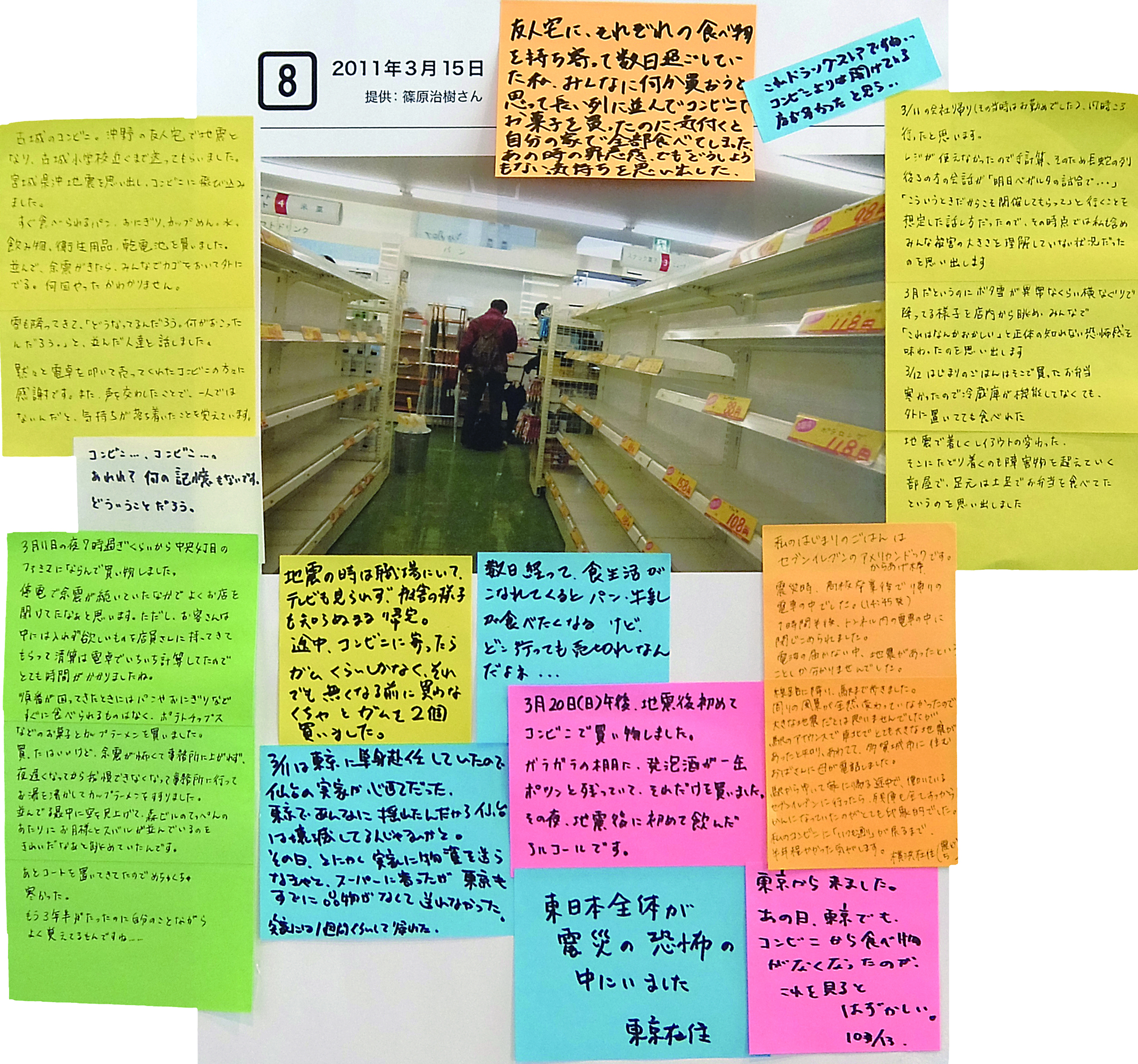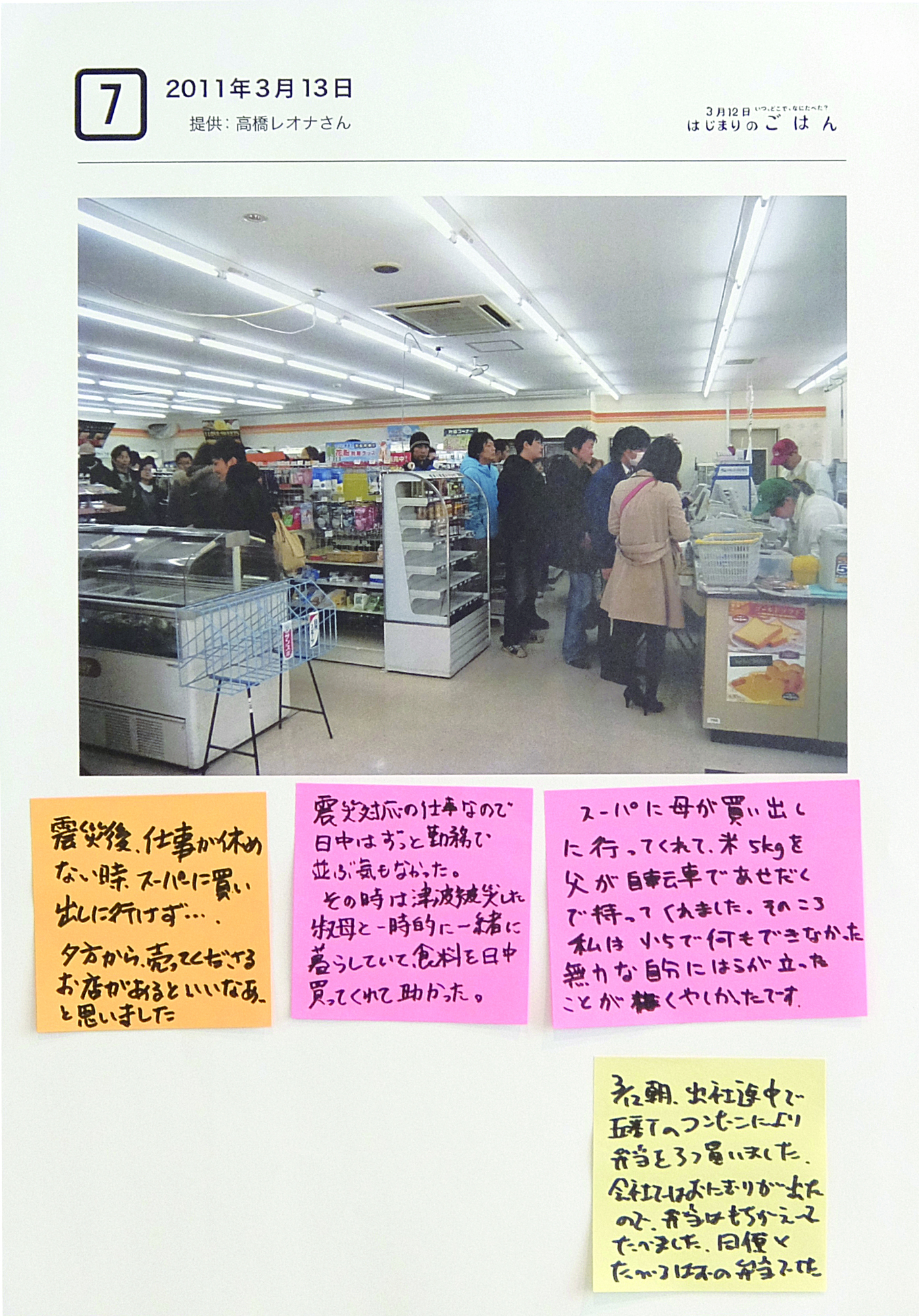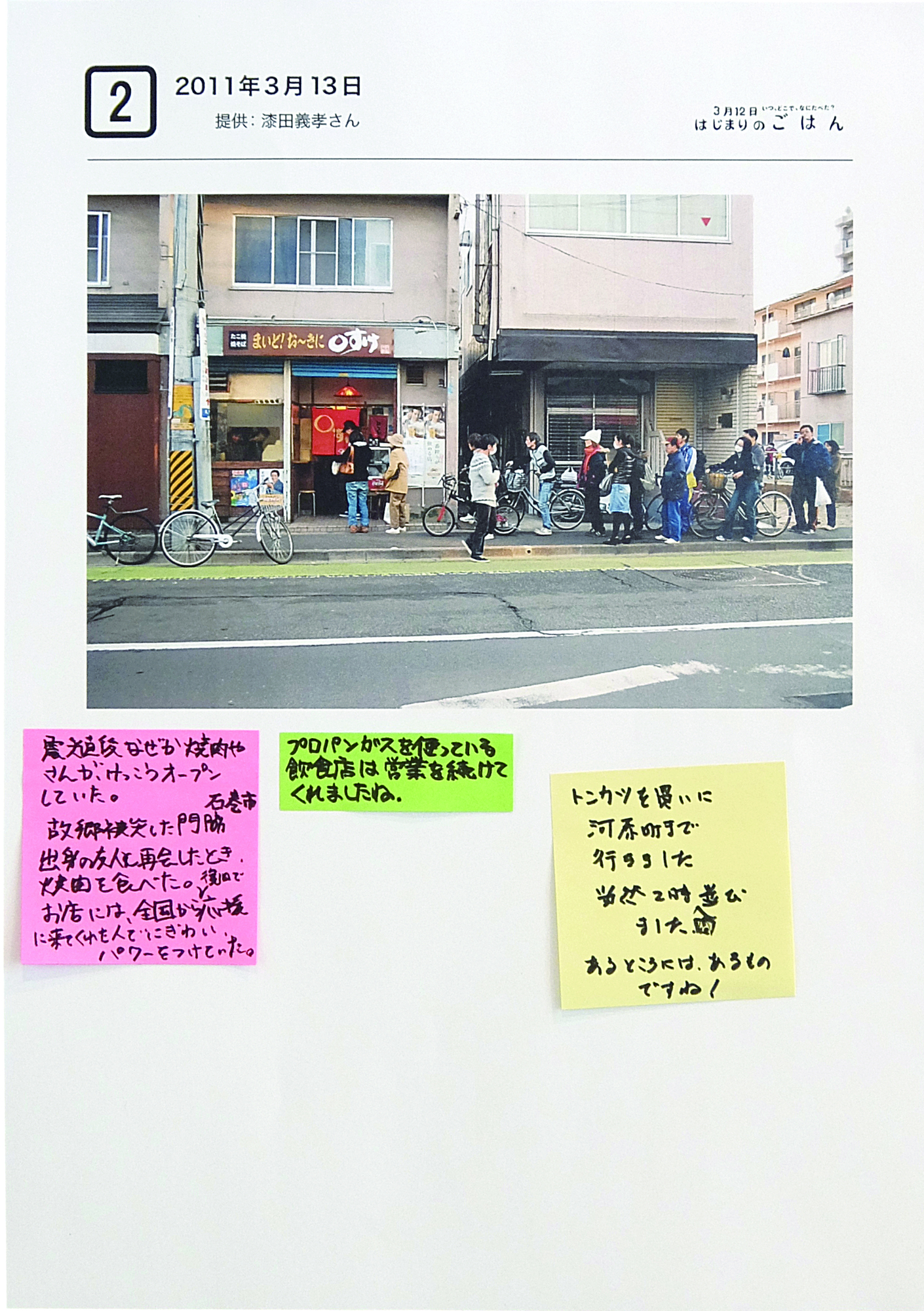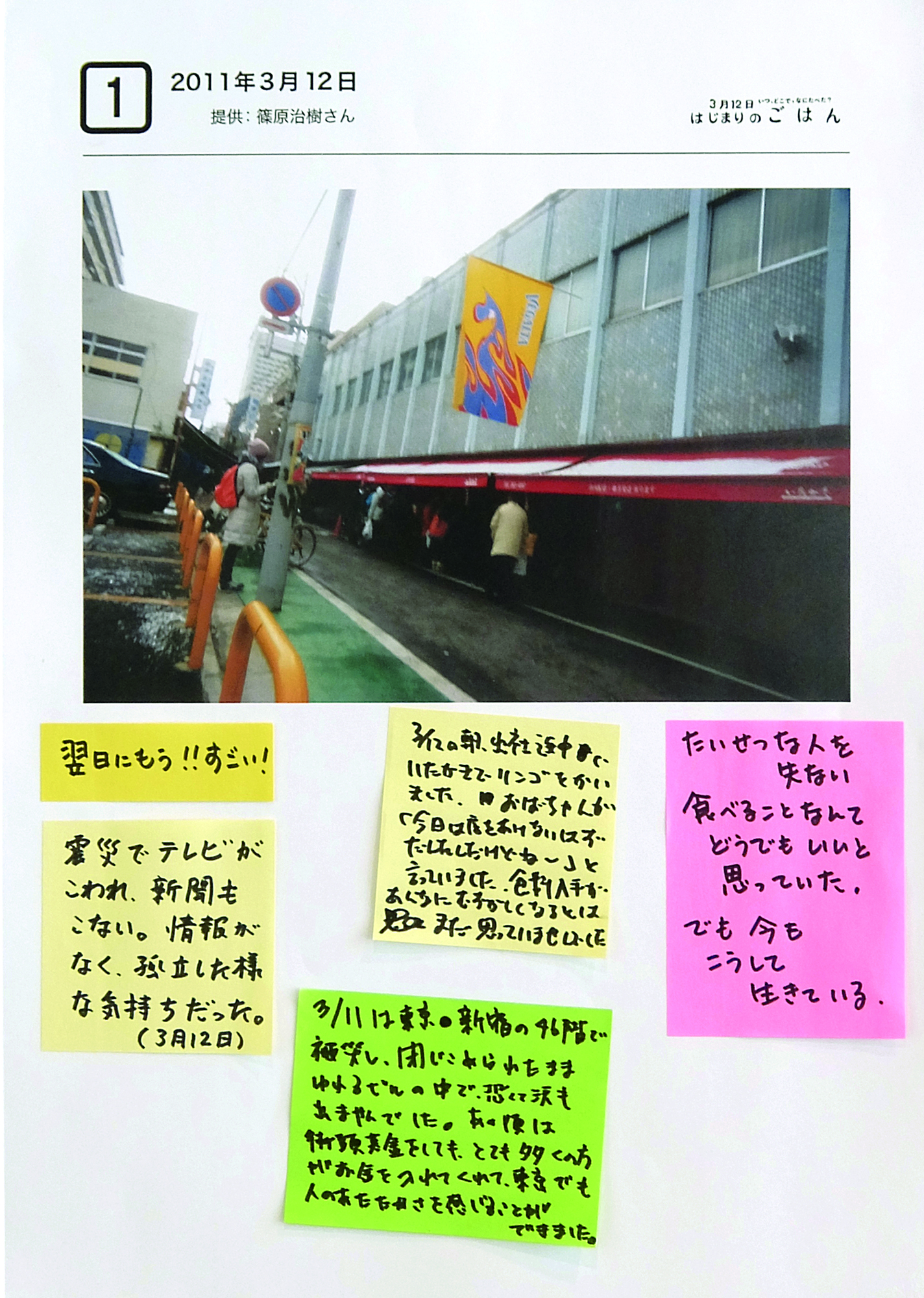March 12: The First Meal After the Earthquake/Convenience stores and supermarkets 06 “The point-of-sale cash register couldn’t be used, so the store used a calculator and a hand-written receipt for us. So grateful.”
3.11 Archive of Memories & Recorder311 Collaborative Project
This article introduces the sticky notes visitors contributed and shows what the panels looked like during the exhibition period of “March 12: The First Meal After the Earthquake ––– When, Where, and What Did You Eat?” For the summary of each exhibited panel, please check out the [INDEX] page.
▼About “March 12: The First Meal After the Earthquake”
▼About sticky note comments
[Fall 2014] Exhibited Panels
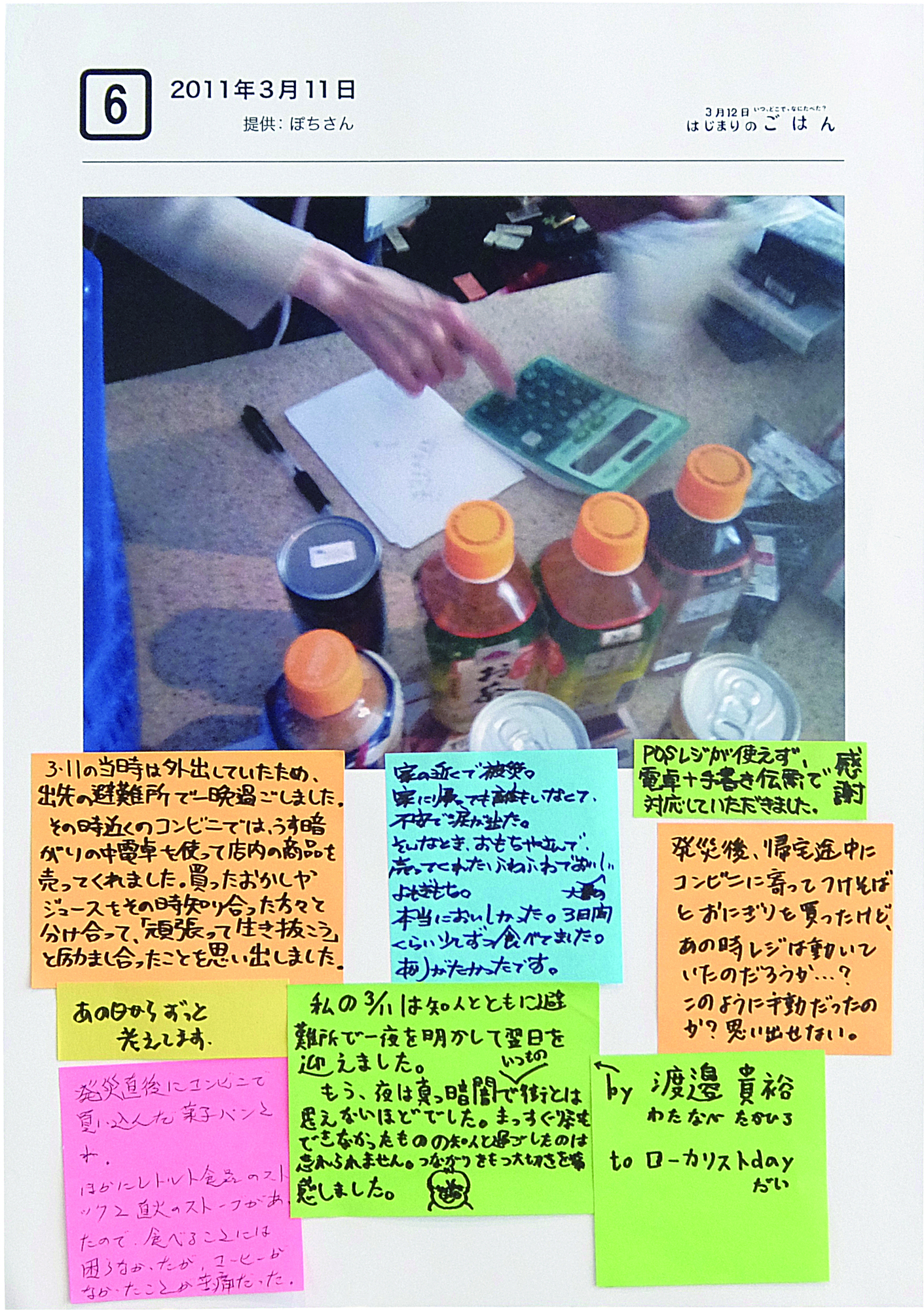
Exhibition Period: October 1st to November 16th, 2014
Venue: Sendai Mediatheque
[Spring 2015] Exhibited Panels
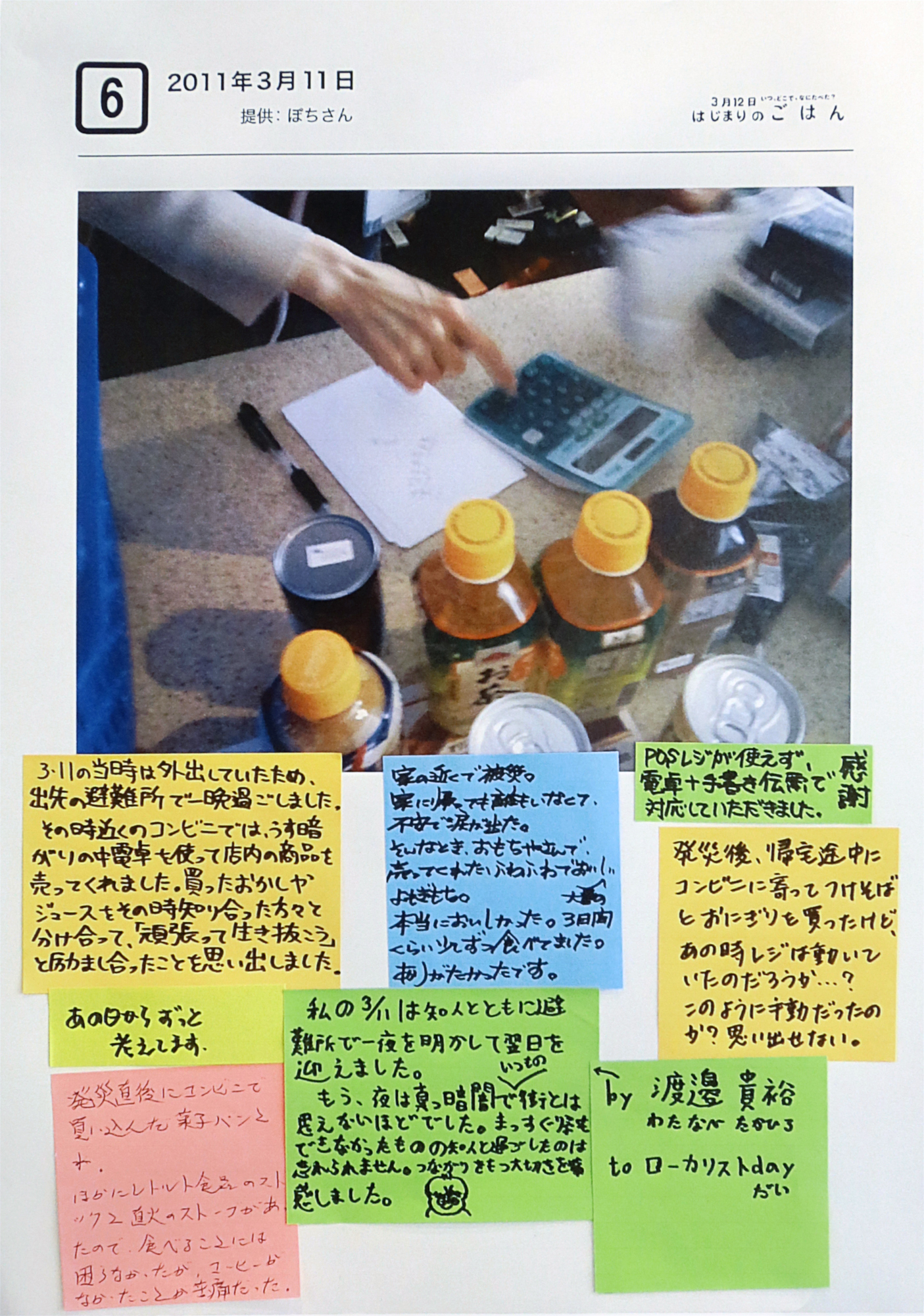
Exhibition Period: February 20th to March 18th, 2015
Venue: Sendai Mediatheque
*On the panels with sticky notes from the [Fall 2014] exhibition, visitors added their own comments.
*Sticky notes written in English are translations of the Japanese text indicated by the arrow.
Comments by Visitors about the Panels
Some comments are not directly related to the photo content or location.
▷At the time on March 11th, I was outside, so I spent the night at a shelter near I was. During that time, a convenience store nearby sold us products in the half-dark store using calculators. I remember how I shared snacks and juice I bought with strangers I met at the time and we encouraged each other, saying, “let’s do our best and live through this.”
▷I’ve always been thinking ever since that day.
▷I bought some pastries at a convenience store right after the disaster. I also had a stock of ready-to-eat food and an open fire stove, so I had enough food, but not having coffee was hard.
▷I experienced the disaster near my house. No one was at home when I went home, and I felt helpless, which made me tear up. That was when I could buy a large quantity of fluffy and delicious mugwort rice-flour dumplings at a rice cake shop. I ate them little by little over about three days. I appreciated that.
▷On March 11th, I spent the night at a shelter with an acquaintance until the next morning. The night was pitch black, and it was unlike the town I knew. I could not go home directly, but spending time with my acquaintance was something I cannot forget. I strongly felt how important it was to be connected. By Takahiro Watanabe to Localist day
▷The point-of-sale cash register couldn’t be used, so the store provided a calculator and a hand-written receipt for us. So grateful.
▷After the disaster, I stopped by at a convenience store on the way home and bought soba noodles with dipping sauce and rice balls, but was the cash register working at the time…? Was it manual like this? I cannot remember.
About sticky note comments
People from many different backgrounds visited this exhibition, including people from Sendai City, as well as people from everywhere, including coastal areas, inland areas, inside and outside of Miyagi Prefecture, and inside and outside of Japan. There were also both adults and children, and these people left comments on sticky notes about what they remembered from seeing exhibited photos at the time of the disaster. Here, the original text comments that were left are posted without editing. Also, English text in gray are translations of Japanese texts.
Original Photo
“Convenience Store Staff Checking Out Using a Calculator as the Cash Register Stopped Working due to Blackout” *
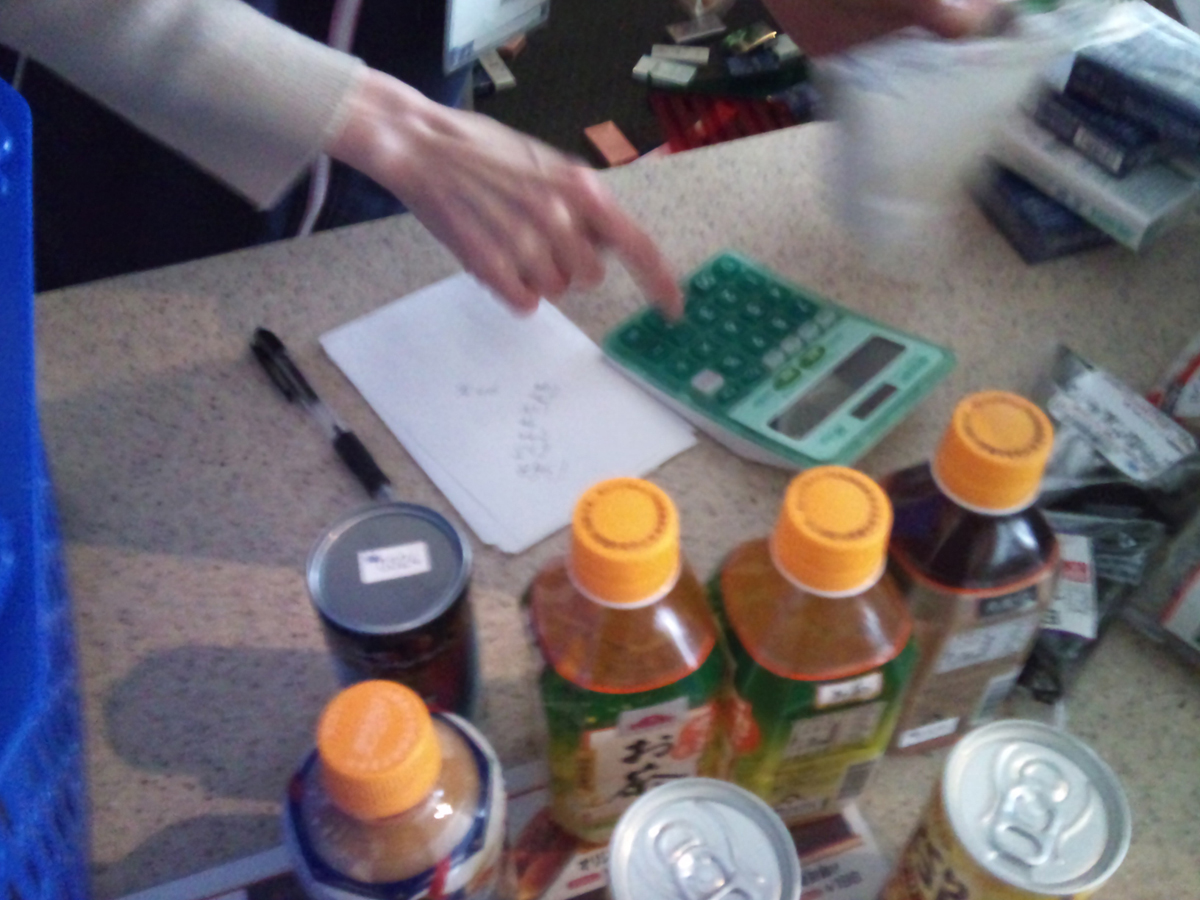
March 11th, 2011
1 Izumichuo, Izumi Ward, Sendai City, Miyagi Prefecture
Recorded by: Pochi
*Source:
Photo Collection “3.11 Record of Memory—3.11 Disaster that Citizens Took as Record of Memory—”
Issued and provided by: 20th Century Archive Sendai
About “March 12: The First Meal After the Earthquake ––– When, Where, and What Did You Eat?”
The project is a participation style exhibition that exhibits photos of “meals” at the time of the disaster, such as photos related to emergency food distribution, grocery shopping, and people sharing meals at a table. Visitors were free to write sticky notes about what they remembered after seeing the photos and how they lived at the time. This exhibition was planned collaboratively by 3.11 Archive of Memories (at the time, called 20th Century Archive Sendai) and the center for remembering 3.11 (recorder311).
Please check out the [INDEX] page for the summary of each exhibited panel and utilization/application examples.
| Recorded on | 11 March, 2011 | |
|---|---|---|
| Recorded by | Pochi | |
| Recorded at | 1 Izumichuo, Izumi Ward, Sendai City, Miyagi Prefecture | |
| Series |








